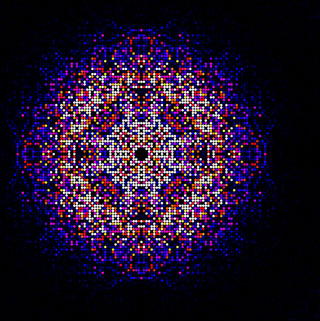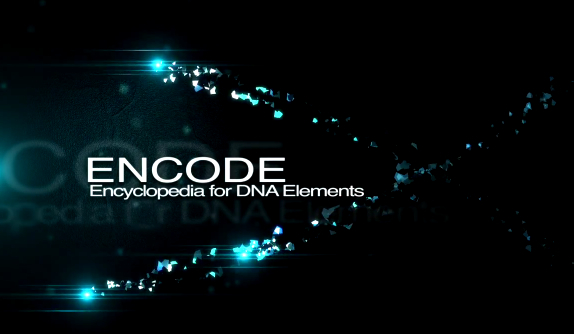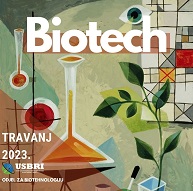Biotechnology news
Drug Developers Turn to Advanced Crystallography Techniques for Critical Structural Information
By BiotechDaily International staff writers
Posted on 24 Dec 2012
The three-dimensional structure of the enzyme cathepsin B was established within intact cells of the protozoan parasite Trypanosoma brucei by researchers employing an intensely powerful free-electron X-ray laser. T. brucei causes African sleeping sickness, a disease that threatens more than 60 million people in sub-Saharan Africa and annually kills an estimated 30,000 people. Currently no good drug solutions exist for treatment of the disease. The enzyme cathepsin B is among the potential targets for drugs under development. However, methods used so far to study the structure of the mature, active form of cathepsin B have not provided sufficient information for the design of a safe and specific drug against the parasite.
 |
|
Image: A map of intensities merged using the CrystFEL software suite from almost 200.000 diffraction patterns obtained from in vivo grown crystals of Trypanosoma brucei cathepsin B. This map is used to synthesize the 3D molecular structure of the enzyme. (Photo courtesy of Karol Nass / CFEL) |
In the current study investigators at Arizona State University (Tempe, USA) and their colleagues at the University of Hamburg (Germany) and the University of Lübeck (Germany) combined two recent innovations, in vivo crystallization and serial femtosecond crystallography, to obtain the room-temperature 0.21 nm (2.1 Angstrom) resolution structure of the fully glycosylated precursor complex of cathepsin B. To obtain this unprecedented resolution the investigators used the free-electron laser Linac Coherent Light Source (LCLS) at the [US] National Accelerator Laboratory SLAC (Palo Alto, CA, USA). This intensely powerful light source allowed the structure of the enzyme to be determined from one micrometer-sized in vivo crystals. An aqueous suspension of enzyme crystals was passed through the path of the laser beam, which fired approximately 120 times per second. On average, every eleventh shot impacted a crystal, resulting in a total of 293,195 diffraction images being recorded.
This huge number of images could only be processed by massive parallel computing, to first generate a three-dimensional map of all diffracting signals from which an image of the enzyme structure was calculated. The final result, which was published in the November 29, 2012, online edition of the journal Science, revealed the enzyme's structure with a resolution of 0.21 nm.
"These images of an enzyme, which is a drug target for sleeping sickness, are the first results from our new "diffract-then-destroy" snapshot X-ray laser method to show new biological structures which have not been seen before,” said contributing author Dr. John Spence, professor of physics at Arizona State University. “This paper is so exciting as it is based on nanocrystals grown by the groups at in Hamburg and at the University of Lübeck inside living insect cells,” said contributing author Dr. Petra Fromme, professor of chemistry and biochemistry at Arizona State University. “This is the first novel structure determined by the new method of femtosecond crystallography. The structure may be of great importance for the development of new drugs to fight sleeping sickness, as it shows novel features of the structure of the cathepsin B protein, a protease that is essential for the pathogenesis, including the structure of natural inhibitor peptide bound in the catalytic cleft of the enzyme.”
Global Bioinformatics Market Projected to Reach USD 9.1 Billion in 2018
Projected to record double-digit growth, the global informatics market will have the highest revenue contribution from the platforms segment.
The global bioinformatics market, estimated at USD 2.3 billion in 2012, is forecasted to reach a market size of USD 9.1 billion in 2018, at a compounded annual growth rate (CAGR) of 25.4% from 2012-2018, according to Transparency Market Research (Albany, NY, USA; www.transparencymarketresearch.com). The market growth is motivated by a rise in applications across a range of industries. The major contribution to the market demand is from fields such as pharmaceutical research and development, agriculture biotechnology, medical and clinical diagnostics, and other life-sciences related industries.
The services market currently holds a comparatively smaller market share; however, it is expected to increase considerably over the forecast period. The bioinformatics platform segment is the fastest growing market and is expected to contribute 54% of the total market growth during the same period.
Research outsourcing by pharmaceutical giants in the fields comprising bioinformatics content is a significant driver of the global bioinformatics market. These companies, in efforts to decrease time and costs on R&D activities involved in the development of new medicines and new applications for existing drugs, are looking for outsourcing services for bioinformatics knowledge and management tools, platforms, and services.
North America holds the largest share among the regional markets; it, however, is forecasted to be superseded by Europe as the leading market shareholder in 2018, because of rapid growth seen by major European markets such as the United Kingdom and Germany. Europe is predicted to be the fastest growing region, with growth chiefly driven by mounting government support for R&D activities in the region. The bioinformatics services market in Europe and North America is well established and organized, while it is still in an early growth phase in emerging markets of Asia Pacific region.

ENCODE delivers the data - Major scientific effort inspires a new publishing model
On 5 September, the hundreds of scientists working on the ENCODE project revealed a surprising level of activity in the human genome. The project generated so much new information about gene function that it required a new publishing model in which open-access articles and datasets are interconnected. Just as the Human Genome Project revolutionised biomedical research, ENCODE is driving new understanding and opening new avenues for biomedical science. Led by EMBL-EBI and the National Human Genome Research Institute (NHGRI) in the US, it sets out to create an encyclopedia of DNA elements. Its detailed map of genome function now identifies four million genetic ‘switches’, and provides an essential reference to help researchers pinpoint specific areas of research for human disease. The findings are published in 30 connected, open-access papers appearing in three science journals: Nature, Genome Biology and Genomem Research. Nature also developed an iPad app to help users navigate the data on the go. The ENCODE publications sparked a huge amount of interest, making front-page news in the Guardian, New York Times and Washington Post, headlining on BBC television news in the UK and featuring in thousands of and websites around the world. But for many scientists, one of the most interesting features of the ENCODE publications was an innovation in reporting: a ‘virtual machine’ that allows readers to explore the precise analysis methods themselves. ENCODE combined the efforts of 442 scientists in 32 labs in the UK, US, Spain, Singapore and Japan. They generated and analysed more than 15 terabytes (15 trillion bytes) of raw data – which is publicly available. The study used the equivalent of around 300 years of computer time studying 147 tissue types to determine what turns specific genes on and off, and how that ‘switch’ differs between cell types.

Contact
Radmile Matejčić 2
51000 Rijeka
Croatia
Tel. +385 51 584 550
ured@biotech.uniri.hr
OIB (VAT): 64218323816
IBAN: HR3724020061400006958
Radmile Matejčić 2, O-047
http://studentska.uniri.hr/
Biotechnology for the Life Sciences e-mail :














